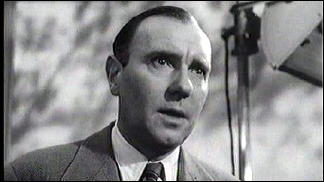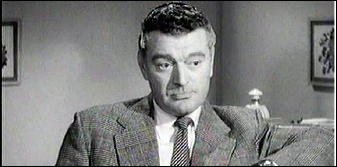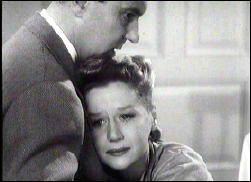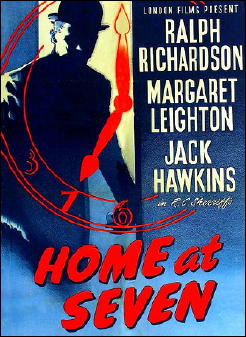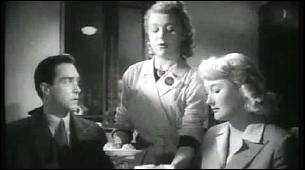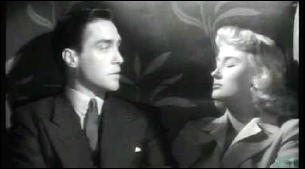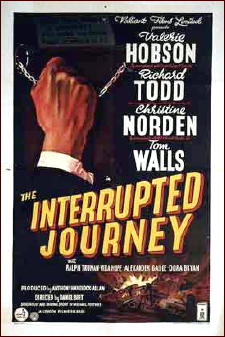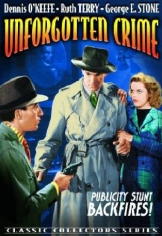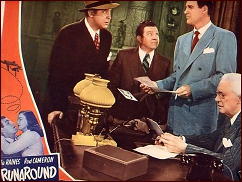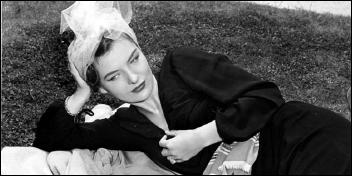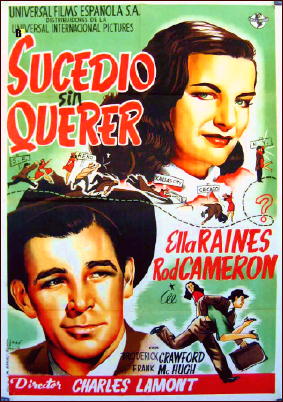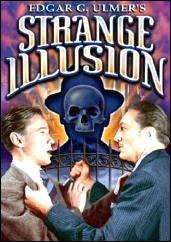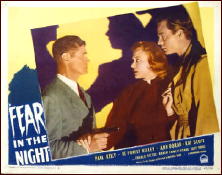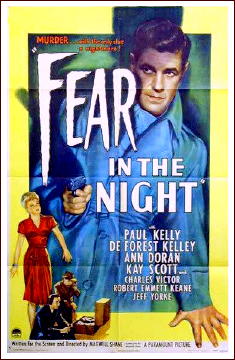Reviewed by DAVID L. VINEYARD:
THE GIRL WITH THE DRAGON TATTOO. ( Män som hatar kvinnor, literally “Men Who Hate Women.”) Sweden, 2009. Michael Nyqvist, Noomi Rapace. Screenplay Niolaj Arcel, Rasmuss Heisterberg. Based on the novel by Stieg Larrson. Director: Niels Arden Opley.

I won’t go much into the complex plot of this international best selling thriller, the posthumous first of a trilogy by Swedish journalist Stieg Larrson. This Swedish film of the book, part of what is known as the Millennium Trilogy (The Girl Who Played With Fire and The Girl Who Kicked the Hornet’s Nest are the other two), introduces the protagonists Mikael Blomkvist, a journalist and publisher of Millennium, an expose magazine, and Lisbeth Salander, a gifted violent and almost feral computer researcher.
To summarize the plot as simply as possible (and leaving a good deal out) Blomkvist faces ruin after a libel suit following his expose of a prominent industrialist’s criminal activities. While waiting a possible jail sentence and financial ruin he is commissioned by Henrik Vanger, the former CEO of Vanger Industries to find out what happened to his niece Harriet, who disappeared forty years earlier, under the guise of researching a history of the Vanger family. Vanger believes someone in the family murdered Harriet, and taunts him by sending him a framed flower every year on his birthday as Harriet once did.
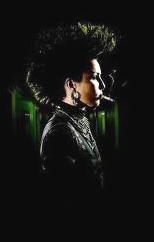
Vanger makes no bones about his family. They are a bad lot, but Harriet was one bright spot among the twisted monsters around her.
Meanwhile unknown to Blomkvist, Vanger has him investigated, the research done by Lisbeth Salander, the girl of the title, a mysterious young woman with a photographic memory and rare skills in her field. Lisbeth is hostile, violent, paranoid, defensive, and dresses in semi Goth outfits, black jeans and pullovers (her nose is pierced too) and rides a motorcycle. She is being sexually extorted by the man who runs her trust fund, but after a brutal rape turns the tables on him.
Lisbeth has dark secrets that Rapace echoes largely like a silent star, mostly with her eyes.
Eventually Blomkvist discovers Lisbeth, and they join forces, uncovering a history of sexual abuse and murder — a possible serial killer — dating back forty years (the sins of the past that haunt the Vanger family could almost come from a Ross Macdonald novel). Their descent into Vanger family history becomes steadily more disturbing until Blomkvist faces torture and murder and is saved only by Lisbeth’s timely arrival.
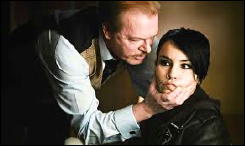
But the death of one killer is only the beginning, and there are dark secrets and the fate of Harriet Vanger still to be uncovered, nor is Lisbeth willing to leave Blomkvist to his fate.
There is a good deal more than this going on. The book could easily be a cross between Agatha Christie, Dorothy Sayers, Andrew Vachss, Mickey Spillane, and a Swedish William Faulkner, with a bit of de Sade and Henry Miller thrown in to boot.
There are enough literary analogies and references for a few dozen dissertations in it without even touching on the social, political, sexual, and psychological depths, but the film manages to capture the feel and the mood of the book even without the benefit of some of its more literary pleasures.
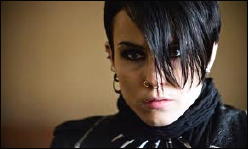
The film version takes a bit to get started, being faithful to the novel with a 152 minute running time. You may find yourself confused how the two narrative tracks are going to join, or wonder when and if they are, but Nyqvist is well cast as the middle aged moral hero and Noomi Rapace is perfect as Lisbeth Salander, who has her own demons.
It is a difficult role, physically and mentally demanding, a sort of female Mike Hammer with a tortured soul and Rapace’s large dark eyes staring out from the face of a child woman will stay with you long after the film ends. Few actresses expose themselves both physically and psychologically as naked as Rapace does in this film
When the film does get going, it is uncompromising, violent, dark, and yet neither exploitative nor merely sensational. Director Opley’s hand is certain, even gifted, and the film is both stunningly shot and sharply written and staged.
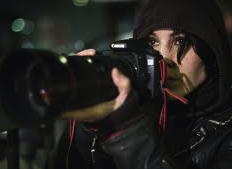
It can’t have been easy shaping Larrson’s unwieldy, in length anyway, very literary work into a taut film, but the effort pays off in a stunning film adaptation that is as good a translation of a big dense book to the screen as I’ve seen in many a year.
This is not a feel good film, but it is satisfying, and surprisingly the hero and heroine come across as human and vulnerable when they could easily have been preachy and self-satisfied in light of the book and movie’s themes of corporate corruption, sexual violence against women, traces of Nazi fascism lingering in the underbelly of wealthy Swedish society, the darkness at the heart of a supposedly perfect society, and generations of sexual abuse and despair.
That Blomkvist and Lisbeth emerge as people you actually care about is a tribute to both the script and the actors playing the roles.

I’ll be watching the sequel The Girl Who Played With Fire in a few days The Girl Who Kicked the Hornet’s Nest has yet to be released on DVD, but I look forward to it, If they keep up this level of work it may prove the best such series of films since The Lord of the Rings and the Harry Potter films.
The American version of the film is in production, but I don’t have high hopes for it. It could hardly look any better, and I can’t imagine an American actress exposing the same mix of vulnerability and toughness while maintaining a core of humanity as real as Rapace’s. No doubt we will get a kick ass Lisbeth much more conventionally pretty and glamorous, but not half as real as Salander.
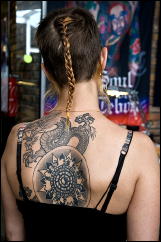
Even if you were indifferent to the book, or just have no urge to read it, see this film. Don’t wait for the American version — I can virtually assure you it won’t tackle half the subject matter or half as graphically. I do warn you, this is violent, sexually graphic, and certainly adult, but it is never sensational or exploitative, and the two characters at its heart prove to be someone you care for in a way rare to any thriller.
The Girl With the Dragon Tattoo is one of the best thrillers I’ve seen in ages — adult, complex, and uncompromising. I actually kept the NetFlix DVD an extra day and watched it again. It’s that good. The Girl Who Played With Fire is next in the queue and I look forward to it.
See this one, but be prepared. It is visceral experience unlike any thriller I’ve seen in many years. It comes at you and refuses to be ignored or just watched, but insists on being experienced. You may well have the urge to pull away a few times while watching it, to distance yourself a bit, but when the credits roll I suspect you will have the same reaction I did.
Damn good movie.
